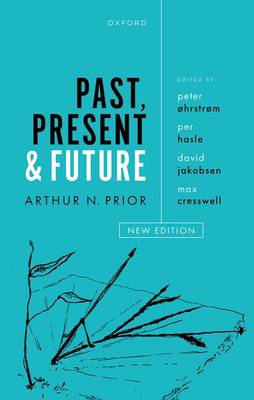
- Afhalen na 1 uur in een winkel met voorraad
- Gratis thuislevering in België vanaf € 30
- Ruim aanbod met 7 miljoen producten
- Afhalen na 1 uur in een winkel met voorraad
- Gratis thuislevering in België vanaf € 30
- Ruim aanbod met 7 miljoen producten
Zoeken
Past, Present and Future
Arthur N Prior, Peter ØHrstrom, Per Hasle, David Jakobsen, Max Cresswell
Hardcover | Engels
€ 61,45
+ 122 punten
Omschrijving
Past, Present and Future, first published in 1867, is the magnum opus of Arthur Norman Prior (1914-1969). Prior was the founding father of tense-logic: Past, Present, and Future presents his tense-logic as a powerful and precise formalism for the systematic study of the temporal aspects of reality. The book was the summation of a decade of work on tense-logic following Prior's John Locke lectures at the University of Oxford in 1956, subsequently published in 1957 as Time and Modality. Among a wide range of topics, Past, Present and Future investigates the idea of branching time that had earlier been suggested by Saul Kripke. It includes several philosophical investigations of time, from a discussion of McTaggart's paradox, the Master Argument of Diodorus, time and existence, problems regarding determinism and future contingency. Prior's discussion of these matters invited a broad scope of ancient and medieval philosophers into the modern discussion in the philosophy of time. Prior was spearheading a revolution in analytic philosophy. Unfortunately, Prior's choice of Polish logical notation has limited its influence. This new edition employs modern notation, making it accessible to a new generation of philosophers and logicians. It includes a new preface a postscript by the editors, which can serve as an introduction to this landmark work of analytic philosophy.
Specificaties
Betrokkenen
- Auteur(s):
- Uitgeverij:
Inhoud
- Aantal bladzijden:
- 256
- Taal:
- Engels
Eigenschappen
- Productcode (EAN):
- 9780198937265
- Verschijningsdatum:
- 11/11/2025
- Uitvoering:
- Hardcover
- Formaat:
- Genaaid
- Afmetingen:
- 144 mm x 222 mm
- Gewicht:
- 435 g

Alleen bij Standaard Boekhandel
+ 122 punten op je klantenkaart van Standaard Boekhandel
Beoordelingen
We publiceren alleen reviews die voldoen aan de voorwaarden voor reviews. Bekijk onze voorwaarden voor reviews.








